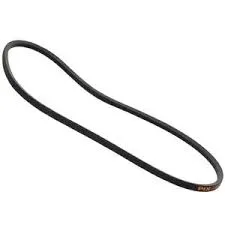- Arabic
- French
- Russian
- Spanish
- Portuguese
- Turkish
- Armenian
- English
- Albanian
- Amharic
- Azerbaijani
- Basque
- Belarusian
- Bengali
- Bosnian
- Bulgarian
- Catalan
- Cebuano
- Corsican
- Croatian
- Czech
- Danish
- Dutch
- Afrikaans
- Esperanto
- Estonian
- Finnish
- Frisian
- Galician
- Georgian
- German
- Greek
- Gujarati
- Haitian Creole
- hausa
- hawaiian
- Hebrew
- Hindi
- Miao
- Hungarian
- Icelandic
- igbo
- Indonesian
- irish
- Italian
- Japanese
- Javanese
- Kannada
- kazakh
- Khmer
- Rwandese
- Korean
- Kurdish
- Kyrgyz
- Lao
- Latin
- Latvian
- Lithuanian
- Luxembourgish
- Macedonian
- Malgashi
- Malay
- Malayalam
- Maltese
- Maori
- Marathi
- Mongolian
- Myanmar
- Nepali
- Norwegian
- Norwegian
- Occitan
- Pashto
- Persian
- Polish
- Punjabi
- Romanian
- Samoan
- Scottish Gaelic
- Serbian
- Sesotho
- Shona
- Sindhi
- Sinhala
- Slovak
- Slovenian
- Somali
- Sundanese
- Swahili
- Swedish
- Tagalog
- Tajik
- Tamil
- Tatar
- Telugu
- Thai
- Turkmen
- Ukrainian
- Urdu
- Uighur
- Uzbek
- Vietnamese
- Welsh
- Bantu
- Yiddish
- Yoruba
- Zulu
ก.ย. . 23, 2024 02:39 Back to list
drive belt
Understanding the Drive Belt A Key Component in Mechanic Systems
The drive belt is an essential component in various mechanical systems, particularly in automotive engines, industrial machines, and household appliances. This flexible loop of material is designed to transmit power from one part of a machine to another, enabling the efficient operation of various functions. Understanding the role and significance of drive belts can help users maintain equipment effectively, ensuring longevity and reducing the risk of mechanical failures.
Drive belts come in various types, including serpentine belts, V-belts, and timing belts, each serving unique purposes within different systems. A serpentine belt, often found in modern vehicles, is a long, continuous belt that links multiple components such as the alternator, power steering pump, and air conditioning compressor. Its design allows for a more compact arrangement of these components, improving engine efficiency and performance.
V-belts, on the other hand, are typically used in older car models and machines where they connect a smaller number of components. The V shape of the belt helps it grip the pulleys firmly, minimizing slippage and power loss. Timing belts, known for their precision, synchronize the rotation of the crankshaft and camshaft in an engine, ensuring proper timing for the opening and closing of the engine's valves.
drive belt

The material composition of drive belts is crucial for their durability and effectiveness. Most drive belts are made from rubber or a rubber composite, featuring reinforcement fibers for added strength. Over time, exposure to heat, oil, and wear can lead to degradation, which is why regular maintenance checks are vital. Mechanics often advise inspecting drive belts for signs of wear, such as fraying edges, cracks, or glazing, which can indicate that it’s time for replacement.
Proper installation of a drive belt is equally critical. A belt that is too loose may slip, preventing components from receiving adequate power, while a belt that is too tight can cause premature wear or even damage to nearby components. Therefore, following the manufacturer’s specifications regarding tension and alignment is essential during installation or replacement.
In industrial applications, drive belts are not limited to automotive use; they are found in conveyors, compressors, and heavy machinery. In these settings, the efficiency and reliability of drive belts directly impact productivity and operational costs. A malfunctioning drive belt can lead to downtime, resulting in significant financial loss for businesses.
In conclusion, the drive belt plays a vital role in the functioning of various mechanical systems. Whether in vehicles or industrial machinery, understanding its types, materials, and maintenance needs can help users ensure smooth operation and prevent unexpected breakdowns. By keeping an eye on the condition of drive belts and addressing any issues promptly, users can extend the life of their equipment and maintain efficiency in operations. The drive belt may seem like a simple component, but it is indeed one of the cornerstones of mechanical reliability.
-
Korean Auto Parts Timing Belt 24312-37500 For Hyundai/Kia
NewsMar.07,2025
-
7PK2300 90916-T2024 RIBBED BELT POLY V BELT PK BELT
NewsMar.07,2025
-
Chinese Auto Belt Factory 310-2M-22 For BMW/Mercedes-Benz
NewsMar.07,2025
-
Chinese Auto Belt Factory 310-2M-22 For BMW/Mercedes-Benz
NewsMar.07,2025
-
90916-02660 PK Belt 6PK1680 For Toyota
NewsMar.07,2025
-
drive belt serpentine belt
NewsMar.07,2025

